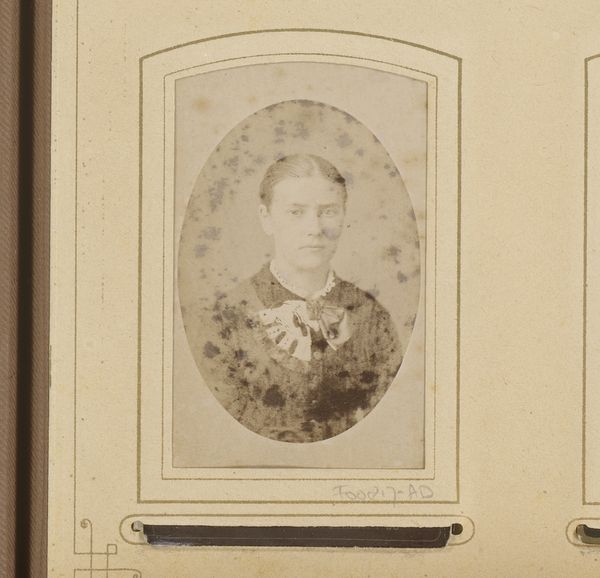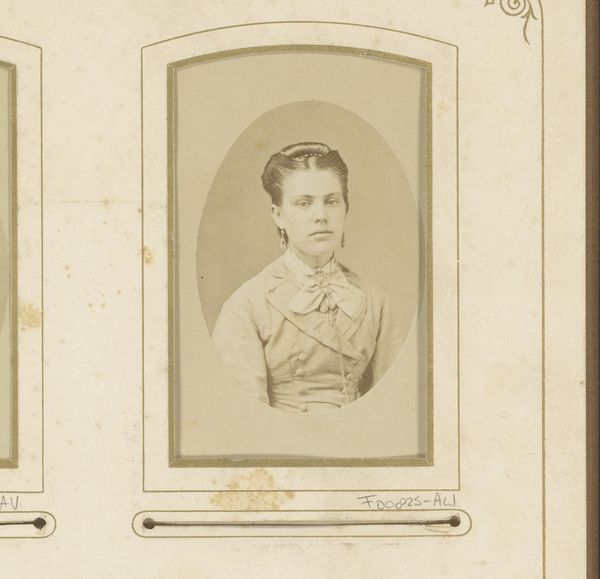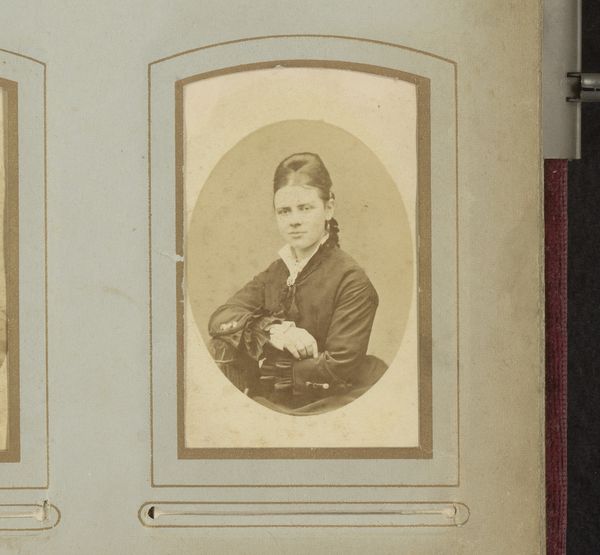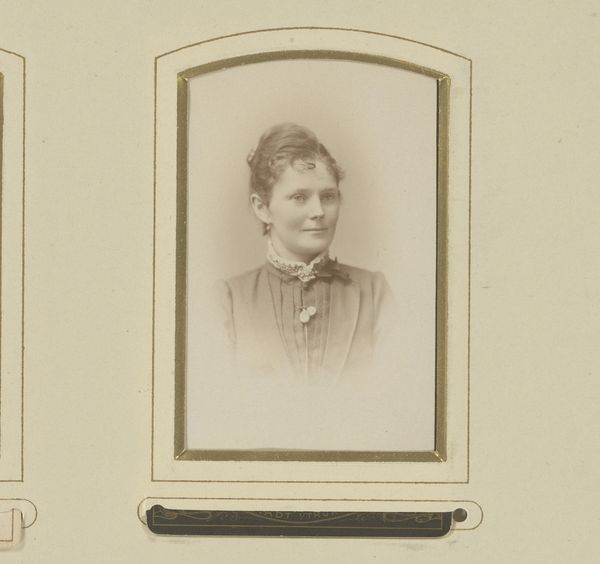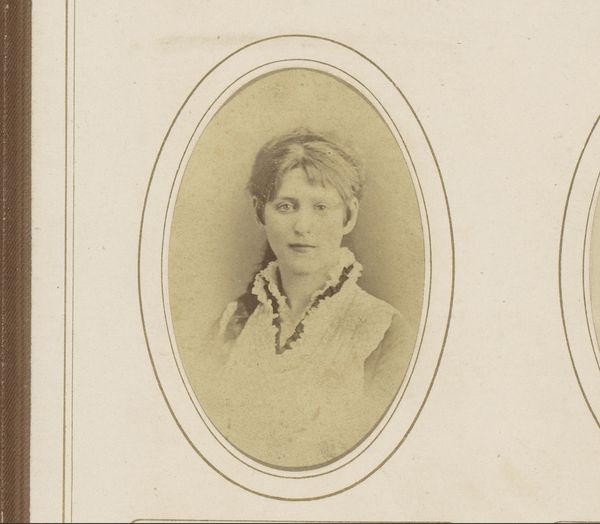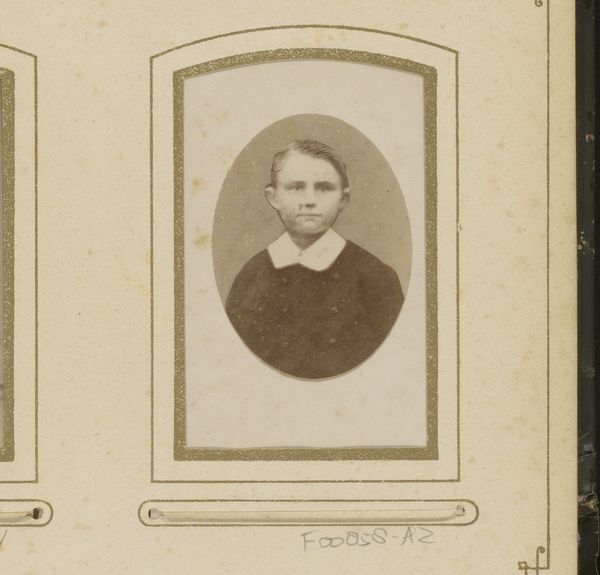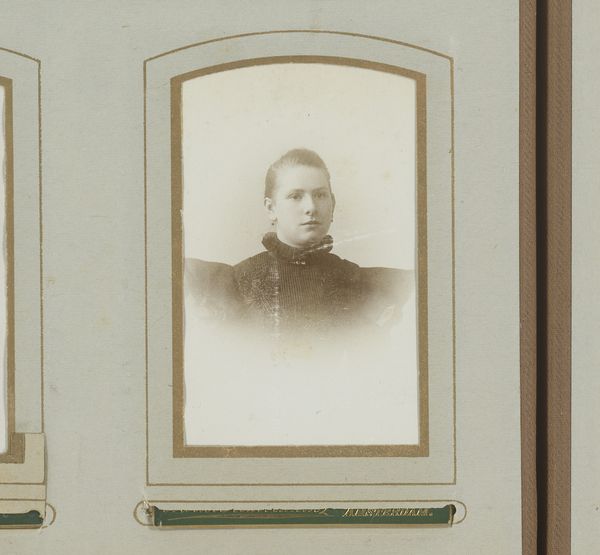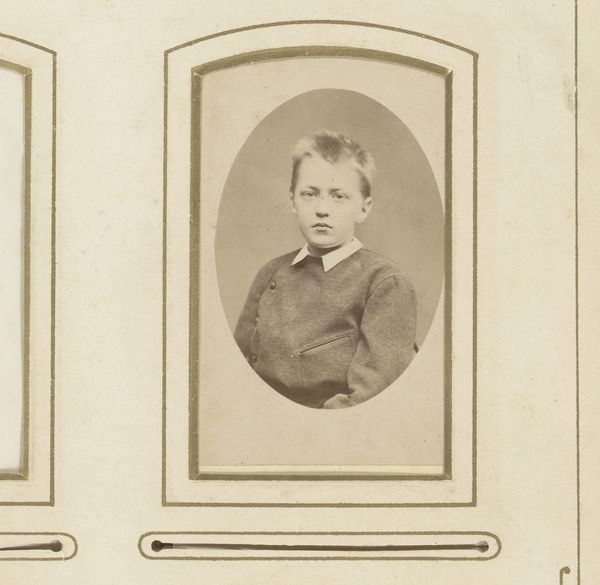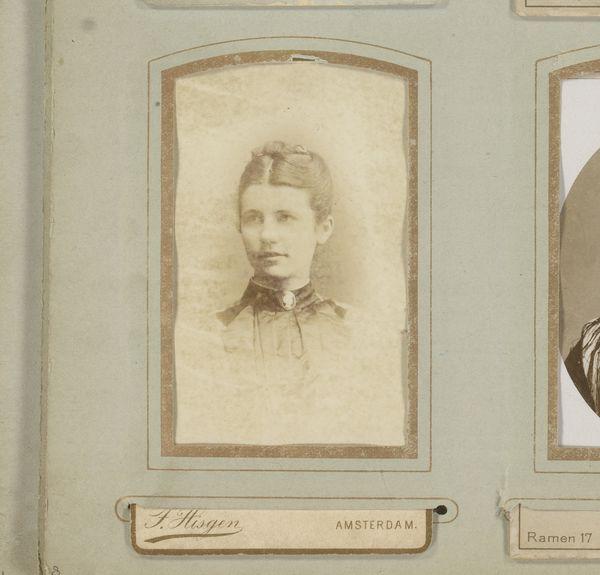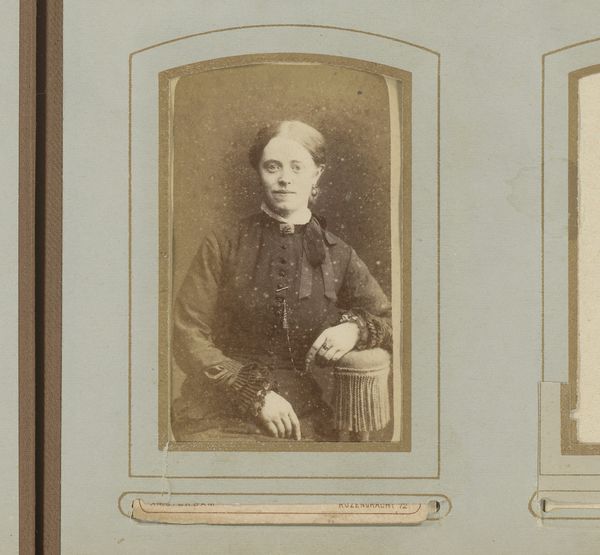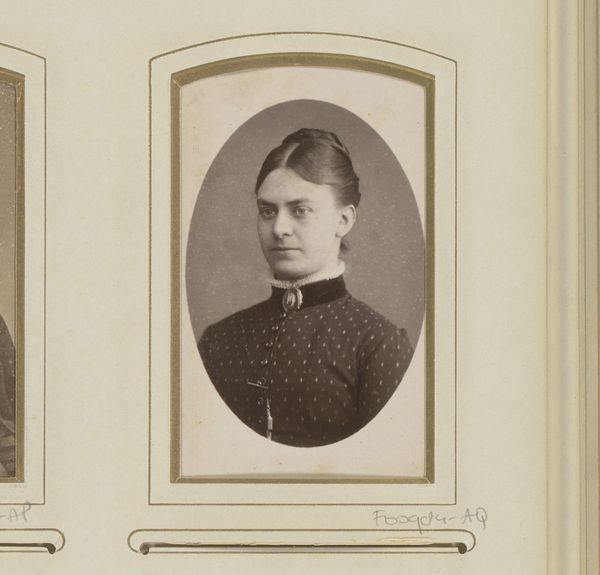
photography, gelatin-silver-print
#
beige
#
portrait
#
aged paper
#
antique finish
#
toned paper
#
earth tone
#
parchment
#
light earthy tone
#
photography
#
brown and beige
#
gelatin-silver-print
#
warm-toned
Dimensions: height 84 mm, width 53 mm
Copyright: Rijks Museum: Open Domain
Curator: This is an arresting portrait of an anonymous woman dating from between 1865 and 1900 by Hermanus Jodocus Weesing. It’s rendered in gelatin silver print, giving it that distinctive warm-toned sepia. Editor: The warmth is lovely, a sepia wash that softens what might otherwise be quite severe. Her gaze is direct, arms crossed defensively, almost challenging. Curator: Precisely. And it is fascinating to consider the cultural context around portrait photography at this time. It was becoming more accessible but still held a certain weight. How did that affect the subjects relationship to the work and their pose, posture? Editor: The oval frame within the larger rectangular format isolates her further, drawing all attention to the figure and her contained energy. There is an amazing tension between that isolation and the apparent intimacy of the portrait. The light has softened her skin; she's obviously trying to present the most ideal picture possible for public viewing, yet there are the underlying realities, you know. Curator: What labor went into producing this object? The mixing and handling of chemicals, preparation of the gelatin silver emulsion, printing, washing, toning and mounting of the print. These are skills acquired through training. What did such vocational labor mean to social mobility at the turn of the century? Editor: The high contrast around her face forces me to observe this interplay between light and shadow—the delicate play in the ruffles of her blouse versus the more somber areas that make the features pop. The placement of the head against a plain, softly shaded backdrop keeps me in the realm of line and tonality. It all coalesces to reveal what, perhaps, is both hidden and shown about her class and experience. Curator: Perhaps these artifacts give us some indication of that, some ability to understand how this anonymous subject perceived herself but it is difficult to ignore the complex conditions that contributed to this image and to reconstruct labor as more than a condition. Editor: True. Viewing through a material lens does allow a wider historical awareness, a more comprehensive understanding of how light, form and tone converge and resolve to express life experience in still form. Curator: Indeed. The material processes bring us closer to understanding production and even life beyond the frame, the very nature of what could be held within. Editor: Absolutely. Considering material qualities in this photo draws you inside, deeper than just observing.
Comments
No comments
Be the first to comment and join the conversation on the ultimate creative platform.
